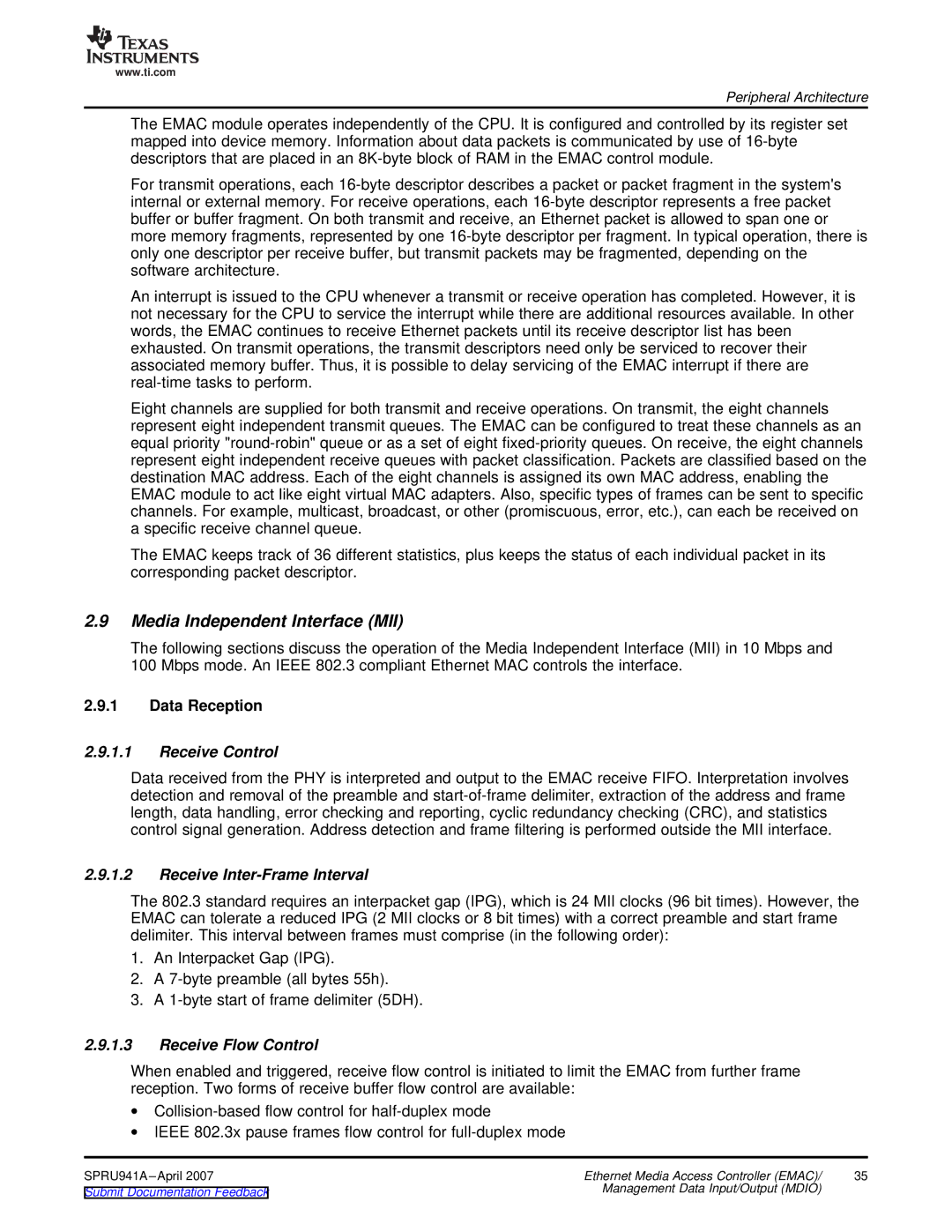
www.ti.com
Peripheral Architecture
The EMAC module operates independently of the CPU. It is configured and controlled by its register set mapped into device memory. Information about data packets is communicated by use of
For transmit operations, each
An interrupt is issued to the CPU whenever a transmit or receive operation has completed. However, it is not necessary for the CPU to service the interrupt while there are additional resources available. In other words, the EMAC continues to receive Ethernet packets until its receive descriptor list has been exhausted. On transmit operations, the transmit descriptors need only be serviced to recover their associated memory buffer. Thus, it is possible to delay servicing of the EMAC interrupt if there are
Eight channels are supplied for both transmit and receive operations. On transmit, the eight channels represent eight independent transmit queues. The EMAC can be configured to treat these channels as an equal priority
The EMAC keeps track of 36 different statistics, plus keeps the status of each individual packet in its corresponding packet descriptor.
2.9Media Independent Interface (MII)
The following sections discuss the operation of the Media Independent Interface (MII) in 10 Mbps and 100 Mbps mode. An IEEE 802.3 compliant Ethernet MAC controls the interface.
2.9.1Data Reception
2.9.1.1Receive Control
Data received from the PHY is interpreted and output to the EMAC receive FIFO. Interpretation involves detection and removal of the preamble and
2.9.1.2Receive Inter-Frame Interval
The 802.3 standard requires an interpacket gap (IPG), which is 24 MII clocks (96 bit times). However, the EMAC can tolerate a reduced IPG (2 MII clocks or 8 bit times) with a correct preamble and start frame delimiter. This interval between frames must comprise (in the following order):
1.An Interpacket Gap (IPG).
2.A
3.A
2.9.1.3Receive Flow Control
When enabled and triggered, receive flow control is initiated to limit the EMAC from further frame reception. Two forms of receive buffer flow control are available:
∙
∙IEEE 802.3x pause frames flow control for
SPRU941A
Submit Documentation Feedback | Management Data Input/Output (MDIO) |
|
